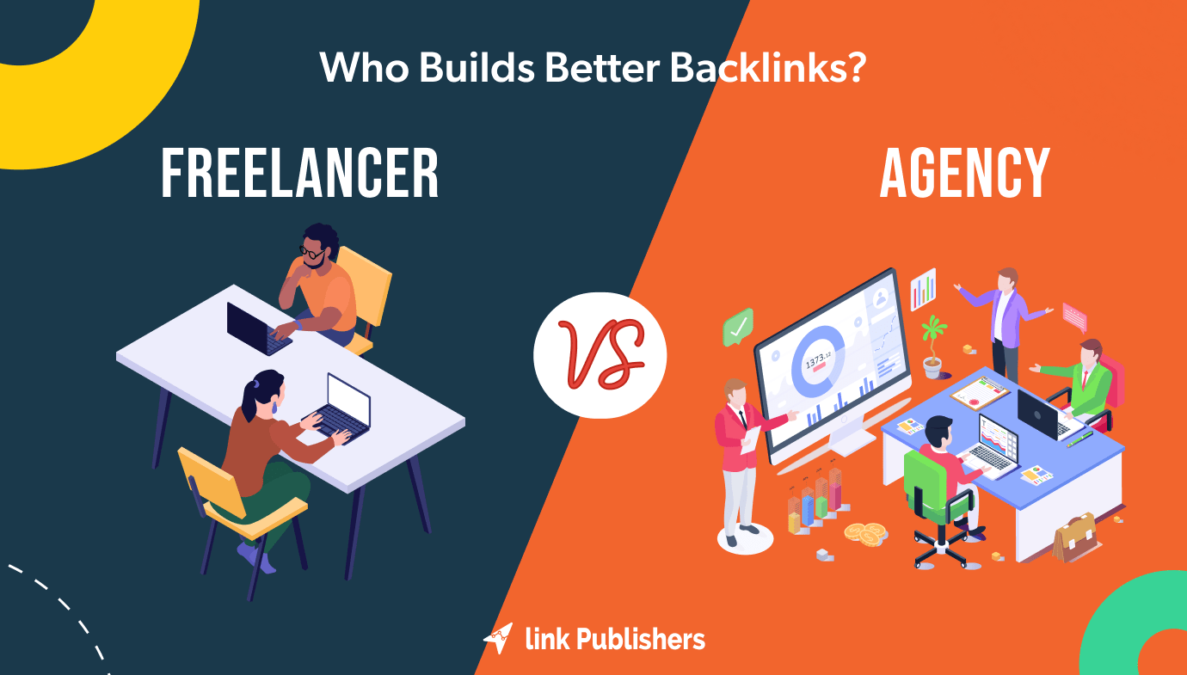🌟 Introduction
Every successful business starts with a single skill — and for many young people today, that skill begins online as a freelancer. Whether you’re a writer, designer, marketer, or developer, freelancing opens the door to independence, global clients, and experience.
But what comes next?
For ambitious minds, the next dream is bigger: building a real agency — a brand with a team, reputation, and recurring income. The journey from freelancer to agency owner is challenging but deeply rewarding.
This guide will walk you through every stage: how to plan, systemize, and scale your freelance career into a thriving agency, step by step.
💡 Step 1: Build a Strong Foundation as a Freelancer
Before leading a team, you must first master your craft.
Your freelancing phase is your training ground. It’s where you learn how clients think, how deadlines work, and how to manage quality.
Focus on These Core Skills:
- Skill Mastery: Deliver high-quality work that sets you apart.
- Client Communication: Learn to manage feedback, revisions, and deadlines.
- Personal Branding: Create a professional profile on platforms like Upwork, PeoplePerHour, or LinkedIn.
- Portfolio Building: Collect 5-10 strong samples that show your best work.
- Time Management: Track your hours and productivity early — it becomes essential later.
Pro Tip: Don’t rush to scale. A weak foundation will collapse when you expand.
🧠 Step 2: Develop an Entrepreneurial Mindset
Transitioning from freelancer to agency owner isn’t just about making more money — it’s about shifting your mindset.
As a freelancer, you’re the doer.
As an agency owner, you become the leader.

Mindset Shifts to Embrace:
- From short-term gigs → to long-term systems
- From working in the business → to working on the business
- From “I can do it all” → to “I need a team”
- From one-off clients → to repeat, loyal clients
Start seeing yourself as a brand, not just an individual. Every message, logo, email, or social post should reflect professionalism.
🧱 Step 3: Identify Your Niche and Services
Agencies don’t serve “everyone.” They solve specific problems for specific audiences.
Example Niches:
- Writing Agency: SEO blogs, copywriting, social media content
- Design Agency: Branding, logos, websites, ad creatives
- Digital Marketing Agency: SEO, paid ads, email marketing
- Tech Agency: App development, web design, software solutions
How to Pick Yours:
- Start with your strongest skill.
- Add complementary services — e.g., a writer adds SEO + editing.
- Research market demand and analyze competitors.
Define your USP (Unique Selling Proposition):
“What makes your agency different from the next one?”
🧩 Step 4: Create a Brand Identity
Your brand is how clients remember you — even before they meet you.
Essentials of a Strong Agency Brand:
- Agency Name: Memorable, simple, and professional.
- Logo + Colors: Reflect your niche (modern for tech, warm for lifestyle, etc.).
- Tagline: A short promise — e.g., “Words That Rank. Designs That Sell.”
- Professional Website: Show portfolio, testimonials, and contact info.
- Social Proof: Build a presence on LinkedIn, Instagram, and Twitter.
Example:
Freelancer: “I write blog posts.”
Agency: “We help brands grow organic traffic through strategic storytelling.”
See the difference? That’s branding.
🛠️ Step 5: Build Your Systems Before You Scale
Your first few clients might come from freelancing platforms or word-of-mouth. But to grow, you need systems that keep things organized.
Systems to Build:
- Client Onboarding: Proposal → Contract → Invoice → Project Brief
- Task Management: Use tools like Trello, ClickUp, or Notion.
- Communication: Create Slack or WhatsApp groups for your team.
- Finance: Track income, expenses, and taxes with Google Sheets or Wave.
- Templates: Use standard proposals, agreements, and delivery checklists.
Systems make your agency look professional and help you scale without chaos.
👥 Step 6: Build a Small Core Team
You can’t do everything forever — and you shouldn’t try to.
How to Start Hiring:
- List what tasks you want to delegate.
- Hire freelancers first (writers, designers, assistants).
- Start small — even with 2-3 people.
- Use clear SOPs (Standard Operating Procedures) so everyone knows the process.
Example Structure:
- Project Manager
- Content/Design Team
- Social Media Manager
- SEO or Strategy Lead
Focus on people who are reliable, passionate, and aligned with your vision.
Remember: A small, loyal team beats a big, confused one.
💬 Step 7: Build Client Relationships, Not Just Client Lists
An agency grows through relationships. Repeat clients bring stability and referrals.
Steps to Strengthen Client Retention:
- Deliver Consistently: Always meet deadlines.
- Communicate Clearly: Send updates and reports regularly.
- Offer Value: Suggest strategies, not just tasks.
- Ask for Testimonials: Add them to your site and proposals.
- Follow Up: Send thank-you notes and holiday messages.
Clients don’t leave good communication — they leave confusion.
💸 Step 8: Set Pricing and Financial Goals
Pricing is what separates freelancers from agencies.
As a freelancer, you charge for your time.
As an agency, you charge for results.
Steps to Price Smartly:
- Calculate your average hourly rate + team expenses.
- Add 20–30% profit margin.
- Offer monthly retainers for long-term clients.
- Introduce packages (Starter, Growth, Premium).
Example:
- Blog Writing Package – $500/month (10 articles)
- SEO Content + Strategy – $1,500/month
- Full Brand Content Management – $3,000/month
Pro Tip: Never compete on “cheap rates” — compete on “clear value.”
📈 Step 9: Market Your Agency
Now it’s time to get visible.
Marketing Channels That Work:
- LinkedIn: Connect with business owners, post your case studies.
- Email Outreach: Send personalized proposals to prospects.
- Portfolio Website: Optimize it for SEO and showcase testimonials.
- Social Media: Share behind-the-scenes, team work, and results.
- Cold Outreach: Use platforms like Apollo.io or Instantly.ai.
Sample LinkedIn Message:
“Hi [Name], I noticed your brand focuses on [industry]. I run a content agency that helps companies like yours improve organic reach through storytelling. Would you be open to a quick chat?”
You’ll be amazed how many clients respond when you personalize your pitch.
🧭 Step 10: Scale With Systems and Delegation
When your client base grows, scale smart — not fast.
Scaling Checklist:
- Automate repetitive tasks with tools like Zapier or Notion AI.
- Hire a project manager.
- Introduce new services gradually (don’t over-promise).
- Document everything — every task, process, and template.
- Use KPIs (Key Performance Indicators) to track team performance.
Scaling is not about “doing more.” It’s about “doing better with less chaos.”
🌎 Step 11: Build a Brand Beyond Borders
Once your agency runs smoothly, start thinking globally.
- Register your business officially.
- Build a professional website with a
.comdomain. - Create a brand email (e.g., hello@youragency.com).
- Partner with international platforms like Clutch, GoodFirms, or DesignRush.
- Offer specialized packages for USA, UK, and UAE clients.
With consistent branding and service quality, your agency becomes more than a business — it becomes a name people trust.
💬 Step 12: Lead With Vision, Not Ego
The best agency owners don’t just lead — they inspire.
As your team grows, focus on culture:
- Appreciate your team’s effort.
- Celebrate milestones.
- Encourage learning and upskilling.
- Be open to feedback.
Your agency is a reflection of your leadership. The more you uplift others, the higher you rise.
💼 Benefits of Becoming an Agency Owner
| Benefit | Description |
|---|---|
| Financial Freedom | Earn from multiple clients simultaneously. |
| Team Collaboration | Share ideas and creativity within a group. |
| Brand Recognition | Build credibility in your industry. |
| Scalability | Grow revenue without working 24/7. |
| Impact | Provide jobs and opportunities to others. |
⚠️ Common Mistakes to Avoid
- Hiring too fast without structure.
- Offering too many services too early.
- Ignoring branding or professionalism.
- Neglecting client relationships after delivery.
- Not tracking finances or contracts.
Avoiding these pitfalls keeps your journey smooth.
🧭 Future Outlook: The Rise of Youth-Led Agencies in 2025
With more teens and young adults mastering digital skills, youth-led agencies are the future of online business.
In 2025 and beyond:
- Agencies will prioritize remote teams and automation.
- Clients will choose authentic creators over big corporations.
- Young entrepreneurs will dominate niches like AI content, digital branding, and influencer marketing.
If you start today, you’re early in this wave — and your story could inspire the next generation.
❓Short FAQs
Q1: How long does it take to grow from freelancer to agency owner?
A: On average, 1–3 years depending on consistency, clients, and team building.
Q2: Do I need money to start an agency?
A: Not necessarily. You can start with free tools and freelancers, then reinvest profits.
Q3: Should I register my agency early?
A: Register once you have recurring clients or want to open business bank accounts.
Q4: What skills are most important for agency owners?
A: Leadership, communication, project management, and strategic thinking.
Q5: Can teenagers or students start agencies?
A: Absolutely! Many successful agencies today began as teen freelance projects that evolved into full companies.
🌟 Conclusion
The journey from freelancer to agency owner is not a leap — it’s a climb. Every project you take, every client you serve, and every challenge you face is a step toward something bigger.
Start by believing in your skill. Then build systems, a team, and a brand that speaks for itself. Remember — consistency, clarity, and confidence turn freelancers into leaders.
Your future agency is already forming — it begins the day you decide to stop working for clients and start building with a vision.



